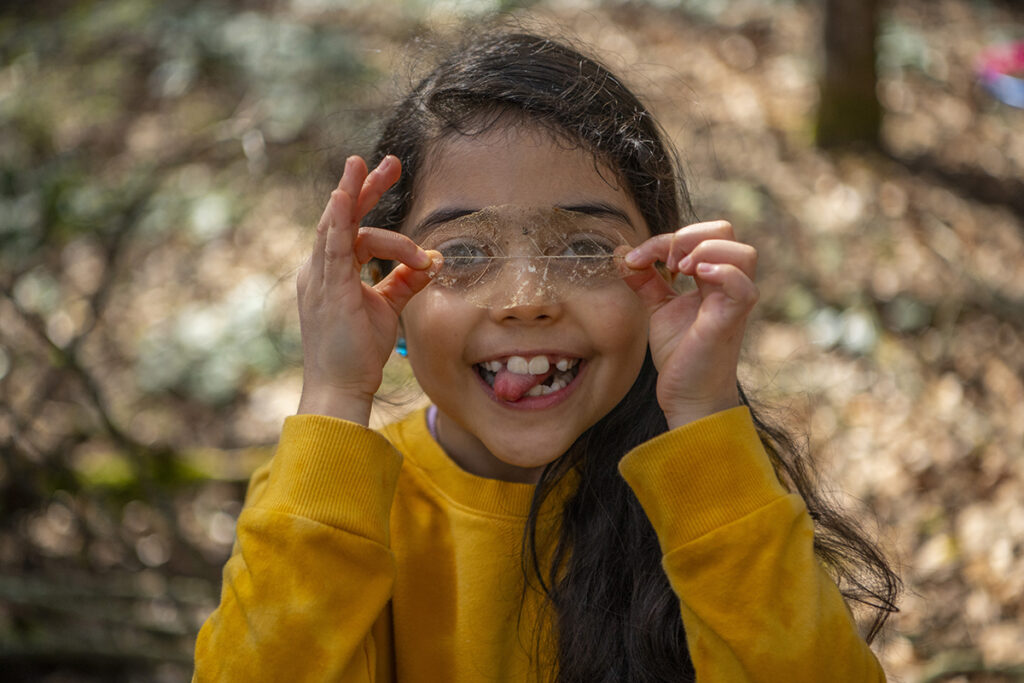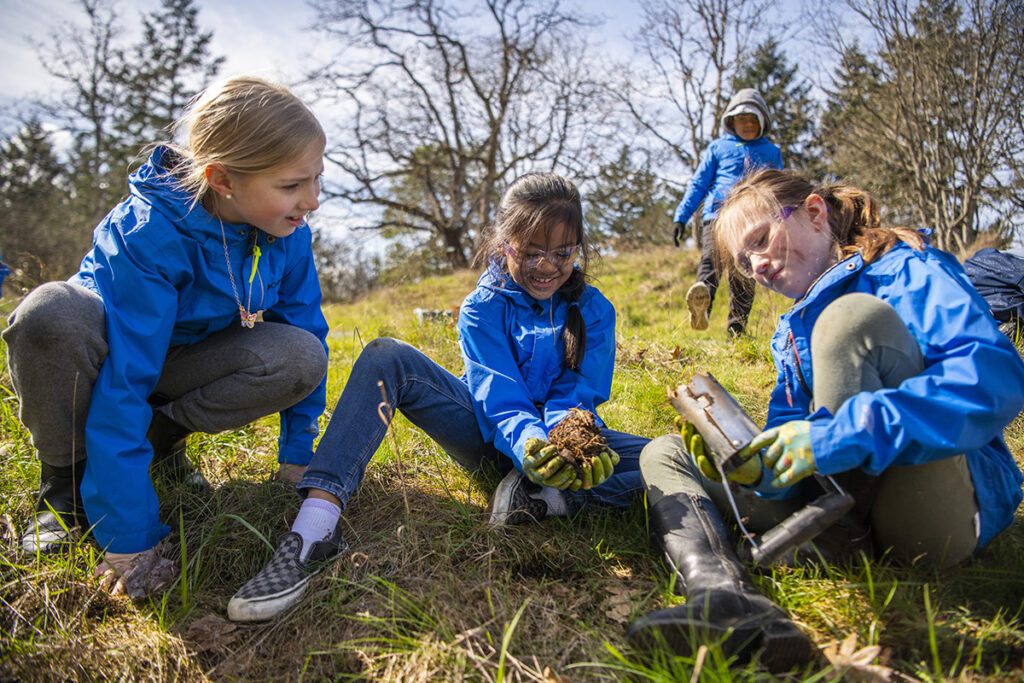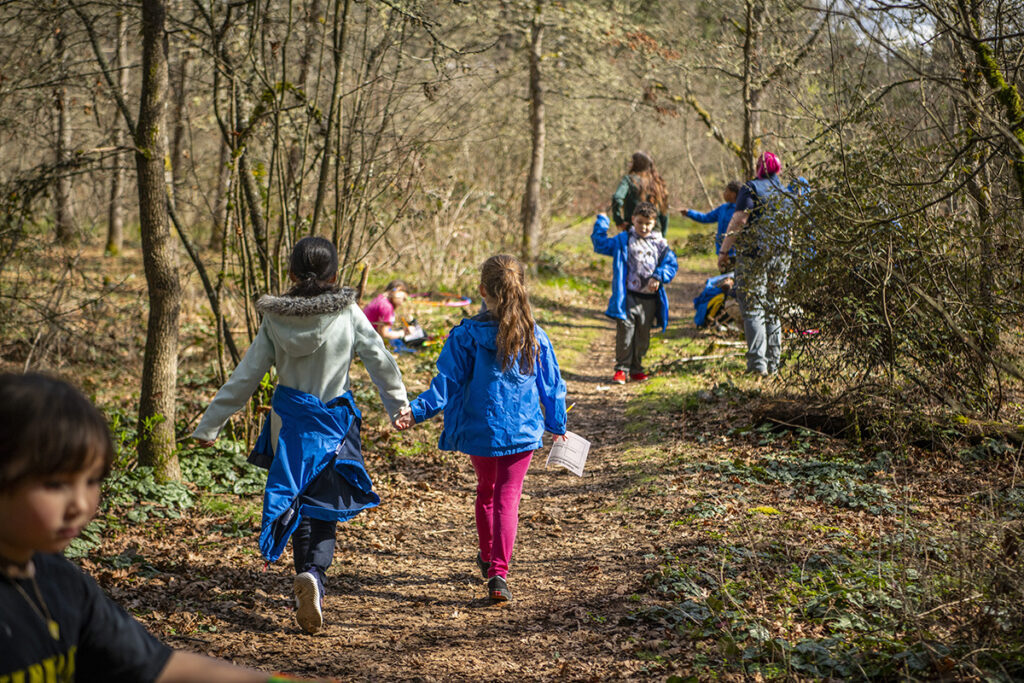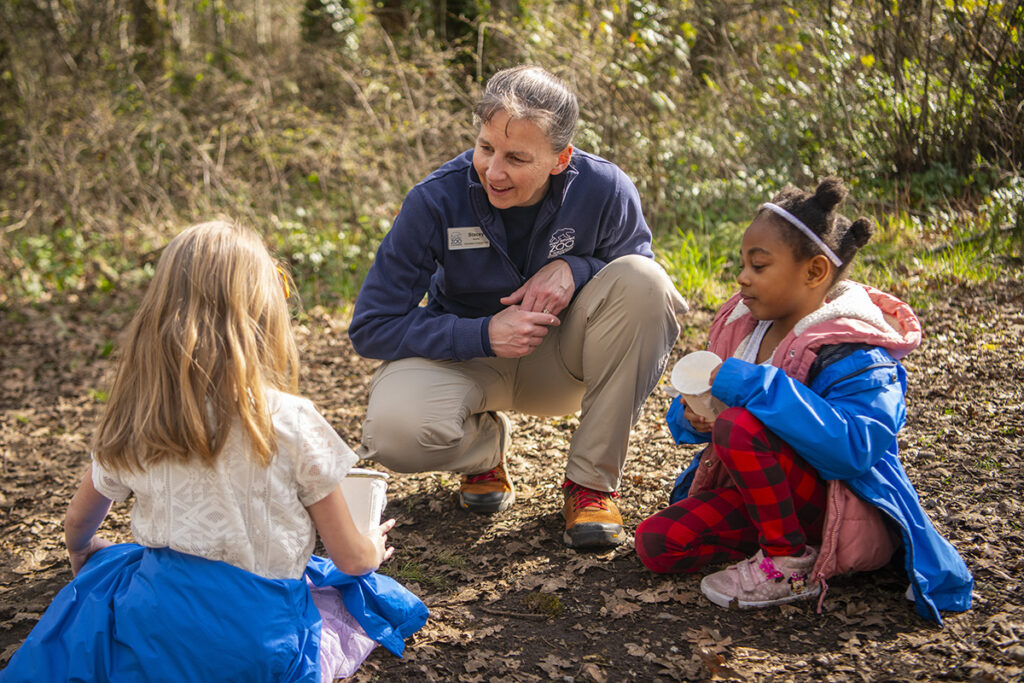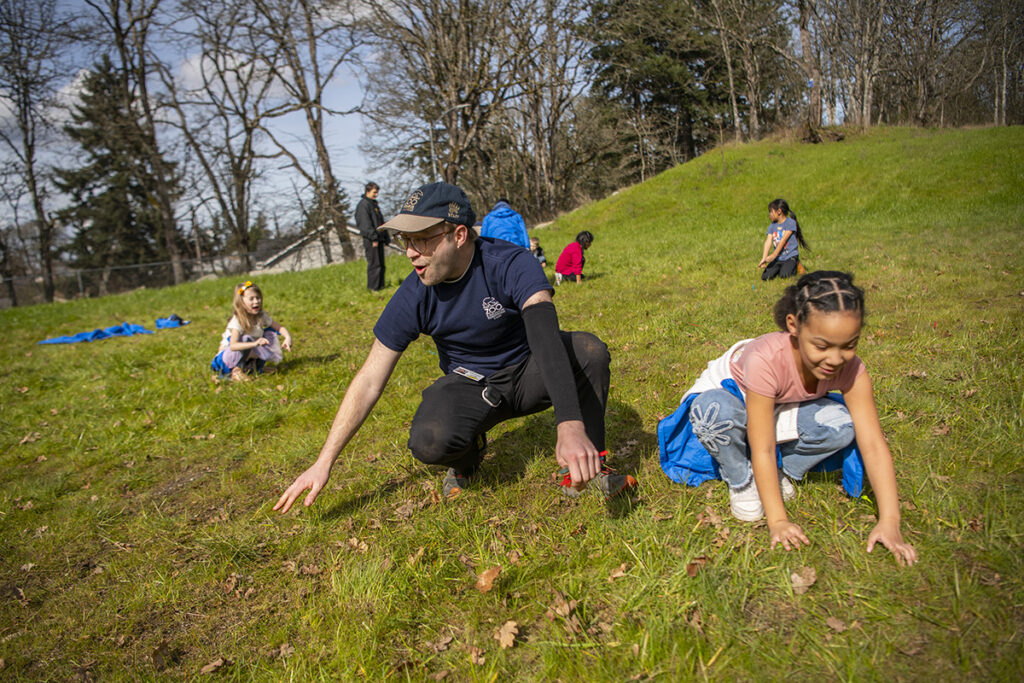They have thick trunks and twisting branches, like winding pathways through time. Their acorns have fallen to the ground, easy pickings for the gray squirrels, birds, and deer that call Oak Tree Park in South Tacoma their home.
On a sunny March afternoon, the acorns from the old Garry Oak trees have also caught the attention of the first and second graders from Arlington Elementary School. The park is within walking distance of their school. The students notice them all over the park ground, crunching underneath their tiny tennis shoes as they begin their lessons in nature.
These kids are Wildlife Champions. They are part of a long-term partnership between Point Defiance Zoo & Aquarium, a facility of Metro Parks Tacoma, and Tacoma Public Schools. Both Arlington and Lister elementary schools participate in the program.
The purpose of Wildlife Champions is to help kids develop empathy for wildlife. They also learn to be good stewards of their schools and neighborhoods, including their local parks. This award-winning program was created following a major study several years ago by Zoo conservation engagement staff alongside other environmental education industry experts, looking into how psychological principles of empathy could be applied to nature and wildlife.
In 2017, staff from the Zoo and Arlington co-created the learning curriculum. In 2018, assisted by grant funds from a private donor, the Wildlife Champions program was born and has since grown to be a core part of the school’s curriculum.
“It’s been an incredible partnership, with strong support from the principal and teachers,” said Liz Hines, the Zoo’s community engagement coordinator. “We have teachers and students who’ve been a part of the partnership since the very beginning.”
On this day, the kids put on their blue Wildlife Champions coats and head out with Zoo staff, volunteers, and their teachers. For this particular outing to the park, one of several throughout the year, the second graders would be planting indigenous camas plants, while the first graders played a coyote survival game and participated in a drum communication exercise.
But when you are a Wildlife Champion (and a curious kid), you can’t help but notice the workers with their big trucks in the front of the park, the hawk in the tree, and, of course, the crunchy acorns all over the ground.
So many lessons planned, and so many more lessons learned. The second-grade teacher, Mrs. Witkoe, has had students in Wildlife Champions since the beginning and her kids are very invested.
“They are highly engaged,” she said, as some students kept telling her they planted another camas bulb. The teacher enjoys coming to the park and seeing the impact all those tiny hands have made through the years as past classes’ camas bulbs have taken root and flourished.
“They’ve been learning about plants, and they’ve also been learning about indigenous tribes who used camas as a source of food,” Hines said.
After planting camas, the second graders headed into the woods and walked the dirt paths underneath the towering Garry Oaks. “This is the best day of my life,” one little girl said.
The first graders had paper cups covered in waxed paper and held tight with what many called “bubber-bands” to make drums. They each took turns tapping their fingers on the wax papers to create a different beat, and their classmates had to try and copy them. Then, they broke into pairs, came up with their own beat for a word and shared it with the group. Some beats meant “Help,” “Food,” and “Meat.”
After their indigenous-inspired communication exercise, the kids turned to the coyote game. They broke up into two packs and chose an alpha coyote (leader). They couldn’t use words, so they motioned and howled, as they searched for colored sticks. Some sticks were meat, water, or other things coyotes might find in the wild. The kids learned to work together to survive and how litter can become a stomachache for a hungry coyote who doesn’t know better.
The Zoo staff and volunteers paired up the children and then dropped hoops on the ground. They challenged the kids to write down everything they saw within the hoops.
There were so many variations of plants, leaves, sticks, and bugs in each hoop, like a new world waiting to be discovered.
And, of course, some had acorns. But one acorn was different – fertilized before it hit the ground. The proof was the tiny green sprout emerging like a little green worm. New life.
Some of the kids stopped and looked at it in awe as they realized this acorn would one day become a new tree. Like true Wildlife Champions, they carefully tucked it into the soil and covered it with the hope that it would take root and grow big, strong, and beautiful, too.
